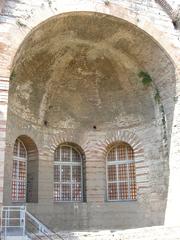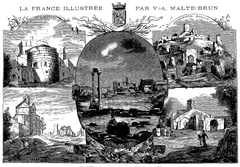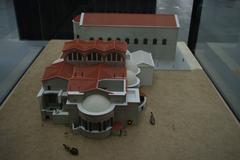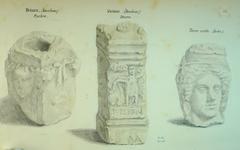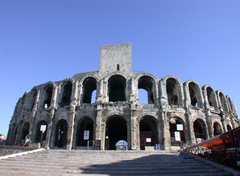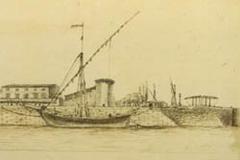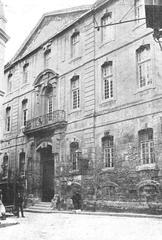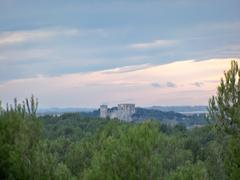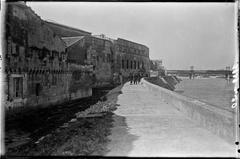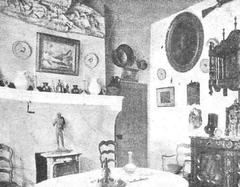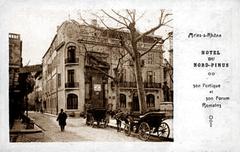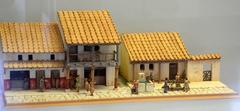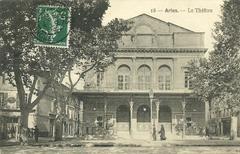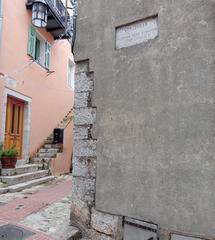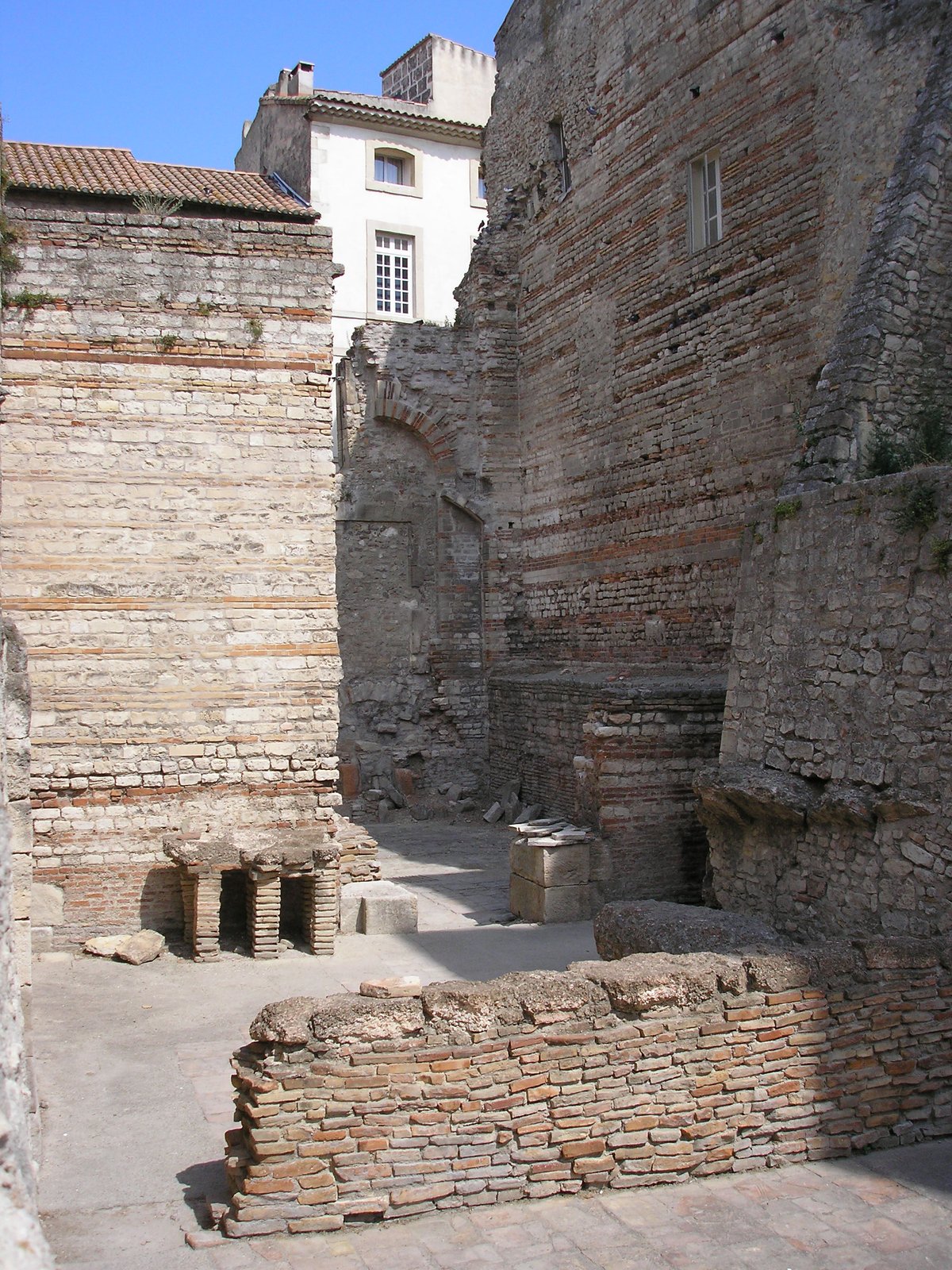
Thermes de Constantin Visiting Hours, Tickets, and Travel Tips
Date: 23/07/2024
Introduction
Discover the grandeur of Roman engineering and architecture at the Thermes de Constantin in Arles, France. This ancient site, also known as the Baths of Constantine, offers an unparalleled glimpse into the past, showcasing well-preserved ruins, insightful tours, and a rich cultural heritage. Constructed in the early 4th century AD during the reign of Emperor Constantine I, the baths were part of a larger complex serving as a social and recreational hub for the Roman populace. They stand today as a testament to the Roman Empire’s prosperity and engineering prowess (UNESCO). Whether you’re a history enthusiast or a casual traveler, the Thermes de Constantin provides a unique opportunity to explore Roman bath architecture, urban planning, and social customs. This guide will cover everything you need to know about visiting the Thermes de Constantin, including visiting hours, ticket information, and nearby attractions.
Table of Contents
- Introduction
- History of Thermes de Constantin
- Visiting Thermes de Constantin
- Travel Tips and Nearby Attractions
- Archaeological Discoveries
- Cultural Impact
- FAQ
- Conclusion
History of Thermes de Constantin
Roman Origins
The Thermes de Constantin, also known as the Baths of Constantine, are a significant remnant of Roman architecture in Arles, France. Constructed in the early 4th century AD, these baths were part of a larger complex that served as a social and recreational hub for the Roman populace. Named after Emperor Constantine I, who ruled from AD 306 to 337, this period marked a time of prosperity and expansion for the Roman Empire, showcasing its wealth and engineering prowess (UNESCO).
Architectural Significance
The Thermes de Constantin are an exemplary model of Roman bath architecture, showcasing the advanced engineering and architectural skills of the time. The complex originally included several key components typical of Roman baths: the frigidarium (cold room), tepidarium (warm room), and caldarium (hot room). The frigidarium, which is the best-preserved part of the baths, features a large rectangular hall with a vaulted ceiling and an apse at one end. This room was used for cold baths and socializing after the hot and warm baths (Arles Tourism).
Historical Context
The construction of the Thermes de Constantin coincided with a period of significant urban development in Arles. The city, known as Arelate in Roman times, was a major port and trading center. Its strategic location on the Rhône River made it an important hub for commerce and military operations. The baths were part of a broader urban plan that included the construction of an amphitheater, a theater, and a circus, all of which contributed to the city’s status as a prominent Roman settlement (France.fr).
Decline and Rediscovery
Following the fall of the Roman Empire in the 5th century, the Thermes de Constantin, like many other Roman structures, fell into disuse and disrepair. Over the centuries, the baths were repurposed for various uses, including as a source of building materials. It wasn’t until the 19th century that systematic archaeological excavations began to uncover the extent and significance of the site. These efforts were part of a broader movement to preserve and study Roman heritage in France (Arles Museum of Antiquity).
Preservation Efforts
In the 20th century, the Thermes de Constantin underwent extensive restoration efforts to stabilize the remaining structures and make the site accessible to the public. These efforts were spearheaded by the French government and various heritage organizations. The baths were designated a UNESCO World Heritage Site in 1981 as part of the “Roman and Romanesque Monuments of Arles” listing, highlighting their historical and cultural significance (UNESCO).
Modern-Day Significance
Today, the Thermes de Constantin are a popular tourist attraction, drawing visitors from around the world who are interested in Roman history and architecture. The site offers a glimpse into the daily life of ancient Romans and the sophisticated engineering that characterized their public buildings. The baths are also an important educational resource, providing valuable insights into Roman urban planning, social customs, and technological advancements (Arles Tourism).
Visiting Thermes de Constantin
Hours and Tips
Visitors can explore the well-preserved remains of the frigidarium and other parts of the baths. Informational panels and guided tours provide context and historical background, helping visitors to appreciate the significance of the site. The baths are located in the heart of Arles, making them easily accessible to tourists exploring the city’s other Roman and medieval monuments. The site is open year-round, with varying hours depending on the season.
- Visiting Hours: The Thermes de Constantin are generally open from 10:00 AM to 6:00 PM, but hours may vary seasonally. It is advisable to check the official website for the most up-to-date information.
- Tickets: Entry tickets cost around €4 for adults, with reduced rates for students and seniors. Children under 18 can enter for free. Combo tickets that include access to other historical sites in Arles are also available.
- Accessibility: The site is partially accessible to visitors with mobility issues. It’s recommended to contact the visitor center for detailed accessibility information.
Travel Tips and Nearby Attractions
Nearby Attractions
While visiting the Thermes de Constantin, consider exploring other nearby Roman monuments such as the Arles Amphitheater, the Roman Theatre, and the Alyscamps necropolis. The Arles Museum of Antiquity is also a must-visit for those interested in further exploring the city’s Roman heritage.
Guided Tours
Taking a guided tour can significantly enhance your visit, providing deeper insights into the history and architecture of the baths. Many tours are available in multiple languages.
Photography Spots
The frigidarium with its impressive vaulted ceiling and the overall layout of the baths offer excellent photo opportunities. Early morning or late afternoon light provides the best conditions for photography.
Special Events
The Thermes de Constantin occasionally hosts special events, including historical reenactments and cultural festivals. Check the official website or local tourism office for upcoming events.
Archaeological Discoveries
Recent archaeological excavations have continued to reveal new information about the Thermes de Constantin. In 2020, a team of archaeologists discovered additional sections of the baths, including parts of the hypocaust system, which was used to heat the floors and walls of the caldarium and tepidarium. These discoveries have provided further evidence of the advanced engineering techniques employed by the Romans and have helped to refine our understanding of the layout and function of the baths (INRAP).
Cultural Impact
The Thermes de Constantin have also had a lasting impact on the cultural landscape of Arles. The baths are a symbol of the city’s rich Roman heritage and have inspired numerous artistic and literary works over the centuries. They are frequently featured in paintings, photographs, and films that seek to capture the grandeur and mystery of ancient Roman civilization. The site also hosts various cultural events and educational programs, further cementing its role as a vital part of Arles’ cultural identity (Arles Museum of Antiquity).
FAQ
What are the visiting hours for Thermes de Constantin?
- The Thermes de Constantin are generally open from 10:00 AM to 6:00 PM, but hours may vary seasonally. Check the official website for the most current information.
How much do tickets to Thermes de Constantin cost?
- Tickets cost around €4 for adults, with reduced rates for students and seniors. Children under 18 can enter for free.
Are the Thermes de Constantin accessible to visitors with mobility issues?
- The site is partially accessible. It’s recommended to contact the visitor center for detailed accessibility information.
Conclusion
The Thermes de Constantin stand as a testament to the ingenuity and grandeur of Roman engineering and architecture. Their preservation and continued study offer valuable insights into the daily life and technological advancements of ancient Rome. As a UNESCO World Heritage Site, the baths are an essential part of Arles’ cultural heritage and a must-visit destination for anyone interested in history and archaeology. Download the Audiala mobile app for more information and updates on visiting the Thermes de Constantin and other historical sites in Arles (Audiala).
References
- Exploring Thermes de Constantin - Visiting Hours, Tickets, and Historical Insights in Arles, 2024, UNESCO
- Exploring Thermes de Constantin - History, Tickets, and Visiting Hours in Arles, France, 2024, Arles Tourism
- Complete Guide to Visiting Thermes de Constantin in Arles - Opening Hours, Tickets, and Tips, 2024, Arles Museum of Antiquity

